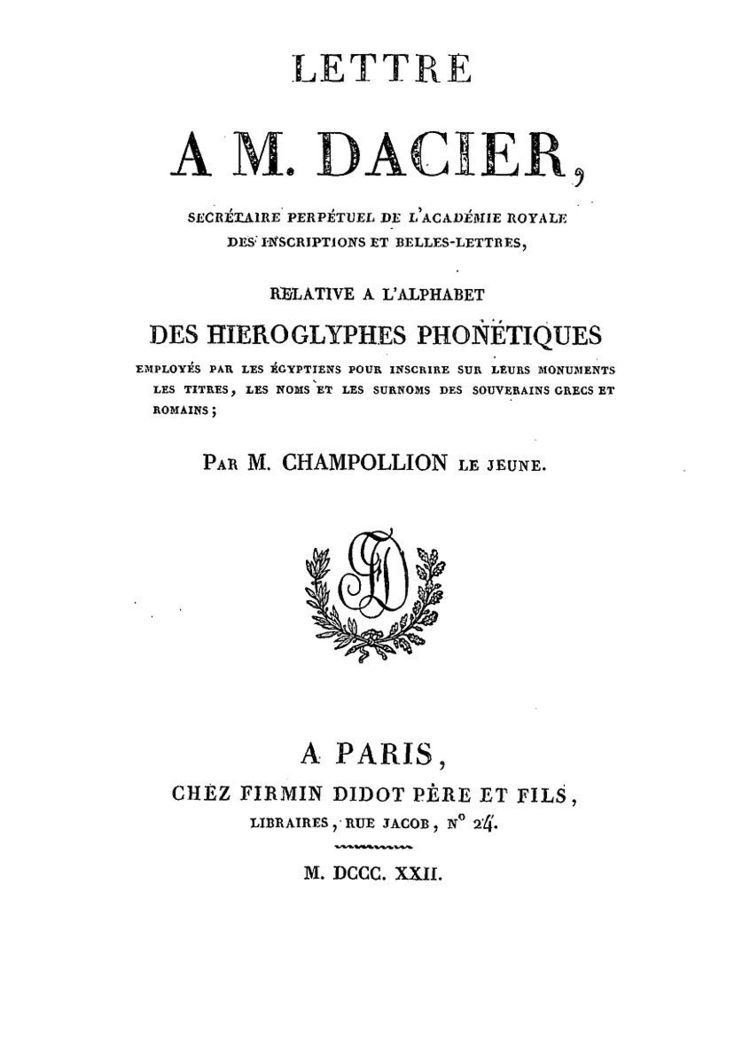Originally published 27 September 1822 | ||
 | ||
Similar Egyptian Grammar: Being an, The Keys of Egypt: The Race, Description de l'Égypte, The Code Breaker's Secret Di, Egyptian Diaries: How One | ||
Lettre à M. Dacier (full title: Lettre à M. Dacier relative à l'alphabet des hiéroglyphes phonétiques: "Letter to M. Dacier concerning the alphabet of the phonetic hieroglyphs") is a scientific communication in the form of a letter sent in 1822 by egyptologist Jean-François Champollion to Bon-Joseph Dacier, secretary of the French Académie des Inscriptions et Belles-Lettres. it is the founding text upon which Ancient Egyptian hieroglyphics were first systematically deciphered by Champollion, largely on the basis of the multilingual Rosetta Stone.
Contents
History
While on September 14, 1822 visiting his brother Jacques-Joseph, great supporter of his ideas, Champollion made a crucial breakthrough in understanding the phonetic nature of hieroglyphics, and proclaimed "Je tiens l'affaire!" ("I've got it!") and then fainted away from his excitement.
On 27 September 1822, he exhibited at the Académie des Inscriptions et Belles-Lettres a draft containing eight pages of text to a packed room. The final version was published in late October 1822 by Firmin-Didot in a booklet of 44 pages with 4 illustrated plates.
Display at the Louvre
On the 150th anniversary of the Lettre in October 1972, the Rosetta Stone was displayed next to it at the Louvre in Paris.
French text of the Letter
"It is a complex system, writing figurative, symbolic, and phonetic all at once, in the same text, the same phrase, I would almost say in the same word."
